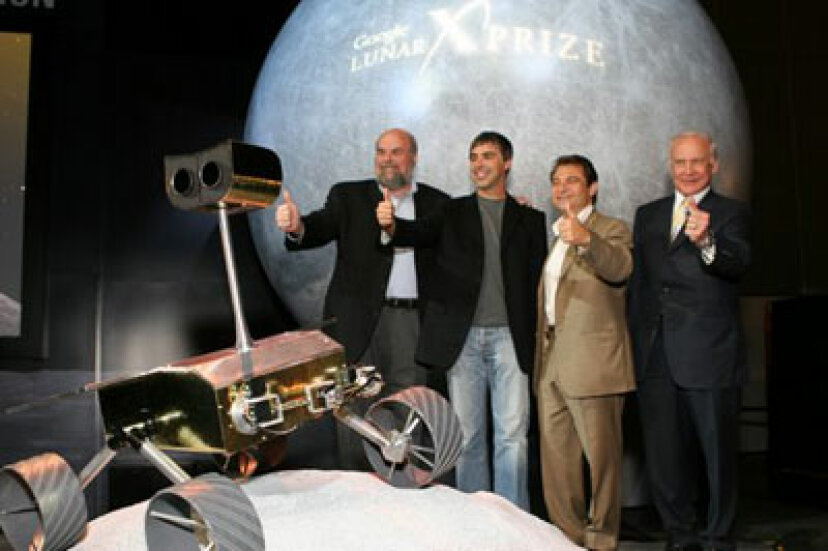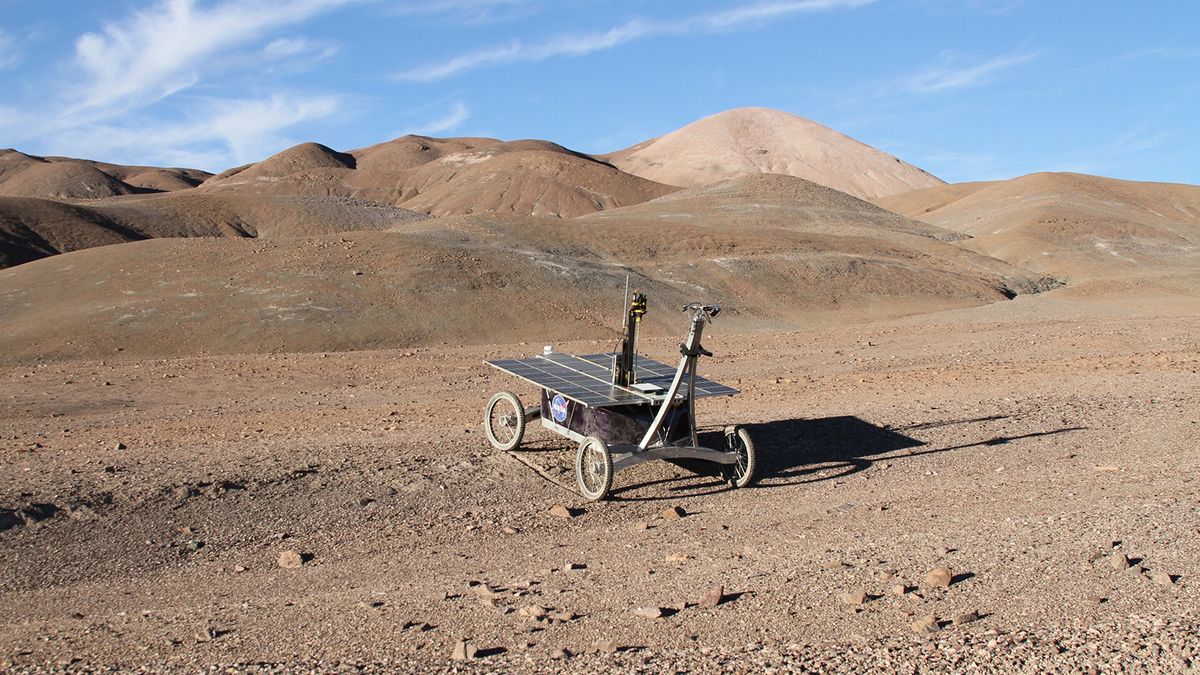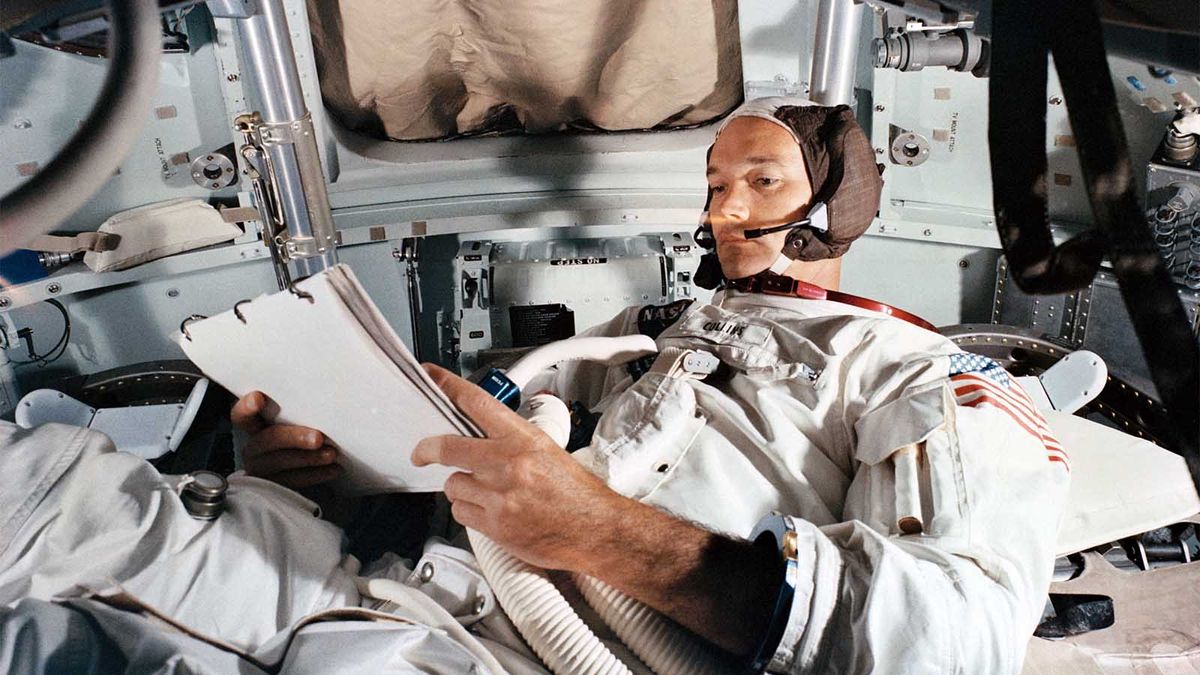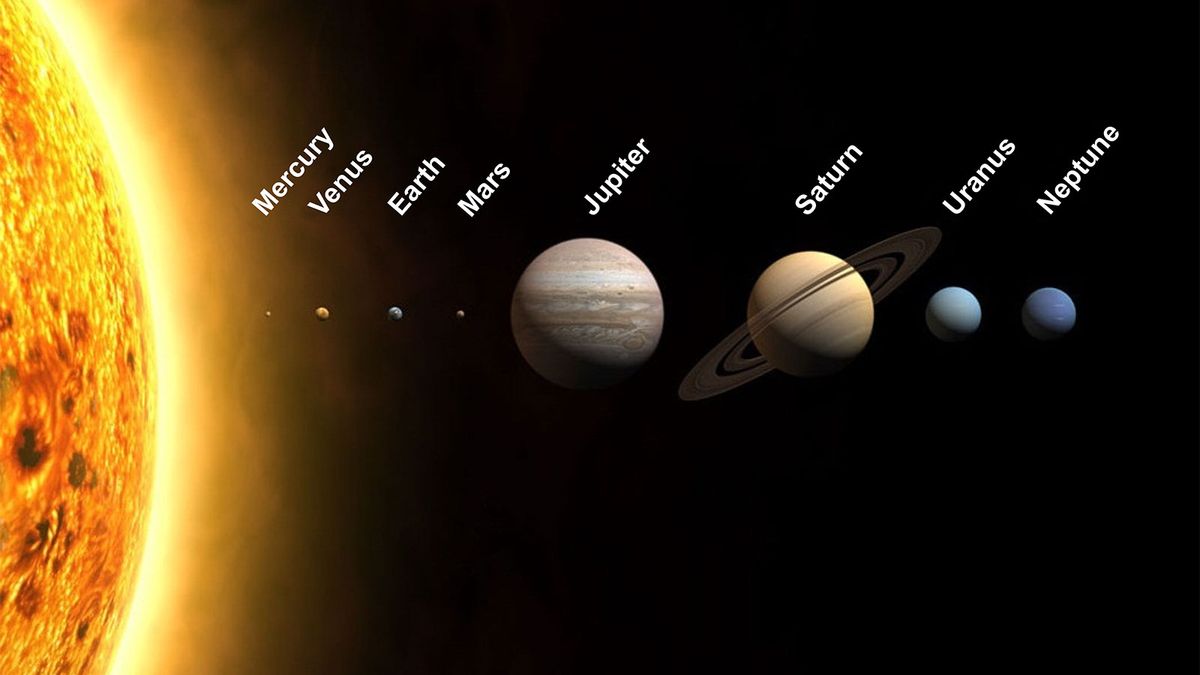
Theo tuyên bố sứ mệnh của công ty, Google là một công ty công cụ tìm kiếm theo đuổi mục tiêu cao cả là tổ chức thông tin của thế giới [nguồn: Google ]. Nó nổi tiếng vì đã thúc đẩy sự đổi mới trong lập trình máy tính. Googleplex, trụ sở công ty của Google, phản ánh các giá trị của công ty bằng cách cung cấp cho nhân viên một nơi làm việc công nghệ tiên tiến được thiết kế với sự cộng tác. Và bây giờ, Google đang mở rộng sự hiện diện của mình ra ngoài Trái đất : Google sẽ lên mặt trăng . Để hiểu cách thức và lý do tại sao Google làm điều này, chúng ta hãy xem nhanh những khám phá trong quá khứ.
Vào ngày 2 tháng 1 năm 1959, tàu vũ trụ Luna 1 được phóng từ Liên Xô khi đó. Nó thoát khỏi lực hấp dẫn của Trái đất và đi ngang qua mặt trăng. Trên đường đi, nó đã sử dụng một số công cụ để thu thập các phép đo trên hành trình của mình. Trong số các dữ liệu được gửi về Trái đất có tiết lộ rằng mặt trăng không có từ trường. Vụ phóng của Luna 1 đánh dấu sự khởi đầu của nhân loại trong nỗ lực nghiên cứu mặt trăng thông qua du hành vũ trụ.
Mười năm sau, tàu vũ trụ Apollo 11 chạm xuống bề mặt mặt trăng. Đây là lần đầu tiên con người đặt chân lên mặt trăng. Các phi hành gia Neil Armstrong và Buzz Aldrin đã khám phá bề mặt mặt trăng, tiến hành các thí nghiệm và thu thập các mẫu vật chất trên mặt trăng.
Trong vài thập kỷ tới, sẽ có nhiều sứ mệnh hơn - có người lái và không người lái - lên mặt trăng. Dần dần, con người bắt đầu nhìn xa hơn mặt trăng đến các thiên thể khác trong hệ mặt trời của chúng ta. Sở thích khám phá mặt trăng bắt đầu giảm dần. Nhưng vào năm 2006, NASA đã công bố một kế hoạch mới để gửi các phi hành gia lên mặt trăng một lần nữa vào năm 2020 [nguồn: NASA ]. Do đó, sự quan tâm đến phong cảnh mặt trăng đang tăng lên.
Điều này đưa chúng tôi đến với Google, một công ty luôn tự hào đi đầu trong việc thu thập và sắp xếp thông tin. Google đang tài trợ cho một cuộc thi có tên là Giải thưởng Lunar X. Cuộc thi dành cho các nhóm do tư nhân tài trợ. Các nhóm được giao một nhiệm vụ dễ mô tả, nhưng rất khó đạt được. Họ phải khởi động một phương tiện có thể hành trình lên mặt trăng, hạ cánh an toàn trên bề mặt của nó và triển khai một thiết bị robot di động. Người chiến thắng có thể nhận được hơn 20 triệu đô la. Một số đội đã tham gia cuộc thi. Cuộc đua đang diễn ra!
Làm thế nào để các đội đủ điều kiện tham gia cuộc thi Giải thưởng Lunar X? Hãy đọc để tìm hiểu.
Nhân tố bí ẩn
Google hợp tác với X Prize Foundation, một tổ chức phi lợi nhuận thúc đẩy sự đổi mới. Quỹ được thành lập vào năm 1996 khi một nhóm những người đam mê không gian trao giải thưởng 10 triệu đô la cho bất kỳ nhóm tư nhân nào có thể chế tạo và bay một phương tiện bay vào độ cao dưới quỹ đạo và trở về an toàn. Năm 2004, những người tạo ra SpaceShipOne đã có thể nhận được số tiền thưởng sau khi vượt qua thử thách thành công.
- Điều kiện đội
- Nội quy của trò chơi
- Người chơi Giải thưởng Lunar X
- Tại sao lại có giải thưởng Lunar X?
Điều kiện đội
Cần gì để cạnh tranh cho Giải thưởng Lunar X? Google và X Prize Foundation đã chỉ ra một số đội đủ tiêu chuẩn phải đáp ứng nếu họ muốn giành chiến thắng:
- Các đội phải gửi thư ý định tới Google. Đây là thông báo chính thức xác lập vị trí của đội trong cuộc thi. Google và X Prize Foundation sẽ xem xét bài nộp của mỗi đội. Sau khi Google hoàn tất Thỏa thuận nhóm chính, mỗi đội sẽ phải ký thỏa thuận để tham gia cuộc thi. Thỏa thuận nhóm chính sẽ thiết lập bộ quy tắc và hướng dẫn cuối cùng mà tất cả các nhóm phải tuân theo.
- Mặc dù Google và X Prize Foundation vẫn chưa giải quyết xong khoản phí đăng ký cuối cùng, nhưng mỗi đội sẽ phải trả một khoản phí không quá 10.000 đô la để tham gia thi đấu.
- Mỗi đội phải nhận không ít hơn 90 phần trăm kinh phí của mình từ các nguồn tư nhân. Nói cách khác, các nhóm không thể xin trợ cấp của chính phủ hoặc bất kỳ quỹ công nào khác vượt quá 10 phần trăm ngân sách chung của nhóm.
- Theo một quy tắc liên quan, các chính phủ không được tham gia trực tiếp vào cuộc cạnh tranh. Ví dụ, Nhật Bản không thể tài trợ cho một đội bóng. Điều này cũng có nghĩa là các tổ chức chính phủ như NASA không thể tham gia cuộc thi. Nhân viên chính phủ có thể tham gia một nhóm miễn là nó không liên quan trực tiếp đến các vị trí chính phủ của họ. Ngoài ra, các đội có thể mua hàng hóa và dịch vụ từ các chính phủ, miễn là các chính phủ được đề cập tạo cơ hội như vậy cho tất cả các đội trong cuộc thi. Các nhóm Google Lunar X Prize được phép của Google không thể mua thiết bị vũ trụ cũ để sử dụng trong thử thách .
- Teams won't be allowed to purchase unique "heritage" equipment. That means teams won't be allowed to browse aeronautical museums and purchase old space exploration equipment to repurpose for the competition.
- Each team must consult with the competition's administrators six months before attempting a launch. The administrators will work with each team to determine a specific landing site on the moon . While teams can attempt to design a mission to take photos of historic moon landing sites, one of the rules of the competition requires such sites be preserved.
- Teams can launch their respective vehicles from any launch facility. Each team must meet local, national and international laws and regulations regarding launching a vehicle into orbit. In the United States, this includes securing a launch license from the Federal Aviation Administration (FAA ).
- Each team must share information about its processes and plans with the rest of the world. One of the goals of the competition is to increase knowledge and education about space exploration. It is the hope of the competition's administrators that the findings from this competition aid future space missions. Sharing information includes everything from blogging to publishing videos and schematics and attending public events.
- Teams must agree to give Google and the X Prize Foundation merchandising rights, although the teams will receive a portion of the revenue generated from merchandise. This could include everything from T-shirts to toy models.
Once Google and the X Prize Foundation finalize the rules and the teams agree to them, the game is on. What does a team have to do to win the prize? Keep reading to find out.
I Won $20 Million U.S. and All I have is a Massive Debt
Could a team win first prize and still end up in a financial deficit? It's quite possible. Teams may have to spend more money than they could possibly win in order to accomplish the competition's goals. That's not unusual, though. Even early aeronautical contests at the dawn of the age of flight saw teams spend significantly more money than they could earn from a clean win.
Rules of the Game
In order to win the full Lunar X Prize, a team must be the first to complete the following tasks:
- Launch a vehicle and make a soft landing on the surface of the moon . A soft landing means the vehicle must make a controlled descent to the surface rather than a crash landing.
- Deploy a vehicle (either the spacecraft itself or a secondary vehicle) to travel at least 500 meters on, above or below the surface of the moon.
- Deliver two separate streams of data to Earth . Google and the X Prize Foundation call these streams "mooncasts." Each mooncast must include at least 500 megabytes (MB) of data.
- The first of the two mooncasts must document the lunar arrival of the spacecraft using videos, still photos, prerecorded messages (in the form of an audio voiceover), an e-mail and a text message . These messages will serve as the first of their kind broadcast from the surface of the moon to Earth.
- The second mooncast has to include videos and photos gathered during the vehicle's journey while on the moon.
- The vehicle must be able to accept a transmission of 10 MB of data from Earth and then retransmit the data back to Earth. Courtesy Google Lunar X Prize teams will have to develop a roving robot to explore the surface of the moon.
If a team's vehicle can accomplish the above goals, the team will win the grand prize: $20 million. There's also a second prize of $5 million. The second prize provide incentive so that teams will continue to try and achieve their goals even if another team grabs first prize. Google and the X Prize Foundation may award the second prize to a team that accomplishes some, but not all, of the goals listed above. For example, should the first team to successfully land a vehicle on the moon discover the vehicle can't travel the full 500 meters required to win first prize, it may be eligible for second place.
In addition to the conditions listed above, there are several bonus objectives teams can attempt. Each bonus objective will earn the winning team a prize. At the moment, the collective prize amount for the bonus objectives is $5 million. The heritage bonus prize awards teams that use their vehicles to capture photos and video of historic artifacts on the moon. In order to pursue this prize, the respective teams must secure permission and cooperation with Google and the X Prize Foundation. Teams that can pilot their vehicles to a distance of at least 5 kilometers can win the range bonus. A vehicle that can survive and remain operational for two full lunar days -- about 58 Earth days total -- is eligible for the survival bonus. The team that has the most diversity within its membership can win a diversity bonus. And finally, should a vehicle detect any evidence that there may have been water on the moon, the responsible team will win the water detection bonus prize.
Google says it will continue to tweak and adjust the qualifications and rules of the game up until January 2009, when it will present the finalized guidelines to all participating teams.
Who are the competing teams? Find out in the next section.
The Clock is Ticking
In order to collect the $20 million first prize, the winning team must complete all the parameters for a successful attempt before Dec. 31, 2012. On Jan. 1, 2013, first prize reduces to $15 million until Dec. 31, 2014. At that time, the contest will either end or Google and the X Prize Foundation may elect to extend the competition.
Lunar X Prize Players

As of this writing, there are 13 teams competing for the Google Lunar X Prize. The first team to officially join the competition is Odyssey Moon. Odyssey Moon completed its registration process in December 2007. Its headquarters are on the Isle of Man, which is in the Irish Sea and is part of the United Kingdom. The team leaders include Bob Richards, once a student of famed astronomer Carl Sagan, and Ramin Khadem, the chief financial officer (CFO) of a satellite -provider company called Inmarsat.
Khadem claims that competing will be rewarding on its own even if Odyssey Moon doesn't win first prize [source: Wired]. That's quite possible, as teams may develop new technologies and processes that will become standard for space travel in the future. Also, competing can help boost an organization's reputation within the scientific community.
The other 12 teams in the competition include:
- Astrobotic Technology, Inc., a team with members representing Carnegie Mellon University, the University of Arizona and the Raytheon Company
- Team Italia, which among its proposed rover designs is considering a spider-like robot to travel across the moon
- Micro Space, Inc., a high-tech company based in Colorado
- Southern California Selene Group, an engineering team led by Dr. Harold Rosen, who designed the first successful geostationary satellite -- this team dropped out of the competition after the official First Team Summit
- FredNet, a collection of open source software and hardware developers
- Aeronautics and Cosmonautics Romanian Association (ARCA), one of the competitors for the original X Prize
- LunaTrex, a team made up of engineers, scientists and entrepreneurs from across the United States
- Quantum3 Ventures, whose founders include former NASA executives and leaders in the aerospace industry
- Chandah (which means "moon" in Sanskrit), headed by Adil Rahim Jafry, an energy industry entrepreneur
- Advaeros, the team representing Advanced Aerospace Industries
- JURBAN, a team representing the nonprofit science education organization known as The Juxtopia Group
- STELLAR, a collaborative effort involving several technology companies, research facilities and universities
- Mystery Team, as of this writing, this is a group that has chosen to remain anonymous for now -- the team will have to reveal its identity by June 20, 2009, the 40th anniversary of the Apollo 11 moon landing
Why are these teams competing for this prize? Most of them cite a love of discovery, innovation and competition. While every team wishes to be the first to fulfill the competition's requirements, most say the prize money isn't the most important incentive. Instead, the teams wish to promote exploration, create new technologies to aid future endeavors and continue the process of privatizing space travel. Through competitions like the X Prize, these teams hope to lead the way in building a new aerospace industry -- one that doesn't have to rely upon public funds.
Why does the Google Lunar X Prize even exist, and how could it affect the way we explore space? Find out in the next section.
No Employees Allowed
X Prize Foundation employees and their family members are not allowed to participate in the competition or invest in any team's venture.
Why is There a Lunar X Prize?

For several decades, only the governments of a few countries got involved in the field of space exploration. Private companies developed many of the technologies used in various space programs. But government agencies were the only groups organizing and executing missions.
The Lunar X Prize is an attempt to encourage a private space exploration industry. Why privatize space exploration? One of the reasons is that privatization promotes competition. With a publically funded program, the administering organization might consider bids from various companies when deciding upon technologies and equipment. Ultimately, only a few private companies will get to produce the equipment used in a mission.
A privatized space industry is a different story. Competing technology companies can participate. It's a huge public relations boost when a company's products contribute to a team winning the X Prize. And because multiple technologies from different companies are involved, it becomes possible to compare different approaches and see what works best.
Another reason to promote a private space industry has to do with costs. Publically funded organizations have to adhere to strict budgets. Sometimes this means a government-funded space organization has to abandon plans if the cost is too much. For example, NASA considered abandoning the Hubble Space Telescope when the projected costs of a robotic repair mission climbed too high. A privatized approach means that each individual, company or organization involved must determine its own spending limits. The consideration shifts from an agreed-upon budget to a comparison of risk versus reward.
The competition's administrators say that they want to promote space travel in a way that engages and excites young people. The future of the space industry depends upon young people getting interested in the field. For that reason, a big part of the competition involves reaching out to educational facilities and allowing students the opportunity to interact with the various teams. By bringing space exploration into the classroom, the administrators hope to inspire the next generation of engineers and astronauts.

Google and the X Prize Foundation also hope that as companies develop new technologies, the price of space exploration will decrease. Since each team must share its approach with the public, future engineers will be able to see which methods are best suited for space exploration. In effect, the Lunar X Prize is a massive research and development project.
Finally, the Lunar X Prize could help establish the moon as a legitimate launching point for future space missions. NASA plans to establish a lunar base by the middle of the century. A base on the moon could serve as the staging ground for missions to more distant destinations, like Mars . Some people believe the moon could harvest energy we could use back here on Earth . The Lunar X Prize helps draw attention (and perhaps funding) to other moon missions.
Want to learn more about the moon and space travel? Blast off to the next page to explore some great links.
To the Moon, Alice
The competition prize money comes from the donations of many benefactors, whether they are individuals, companies or other organizations. With a donation of $25,000 or more, Google and the X Prize Foundation will put the benefactor's name on a plaque. But getting a look at the plaque will require a bit of a trip -- the winning team will transport the plaque to the moon's surface.
Lots More Information
Related Articles
- How the Apollo Spacecraft Worked
- How the Gemini Spacecraft Worked
- How Google Works
- How Lunar Landings Work
- How the Moon Works
- How NASA Works
- How Rocket Engines Work
- How Satellites Work
- How Space Suits Work
- How Space Stations Work
- How Space Tourism Works
- How does going to the bathroom in space work?
- How Space Food Works
- What is a gimbal -- and what does it have to do with NASA?
More Great Links
- Google Lunar X Prize
- NASA
- X Prize Foundation
Sources
- David, Leonard. "Google to Sponsor $30 Million Lunar X Prize." Space.com. Sept. 13, 2007. http://www.space.com/news/070913_google_xprize.html
- Eustace, Alan. "Fly me to the moon." Official Google Blog. Sept. 13, 2007. http://googleblog.blogspot.com/2007/09/fly-me-to-moon.html
- "Google and Space." Google. http://www.google.com/space/
- Google Corporate Overview. http://www.google.com/corporate/
- Google Lunar X Prize. http://www.googlelunarxprize.org/
- "Launch or Reentry Vehicles." Federal Aviation Administration. http://www.faa.gov/about/office_org/headquarters_offices/ast/licenses _permits/launch_reentry/
- "Lunar Exploration Timeline." NASA. http://nssdc.gsfc.nasa.gov/planetary/lunar/lunartimeline.html
- Madrigal, Alexis. "Google Lunar X-Prize Gets First Official Entrant." Wired. Dec. 6, 2007. http://blog.wired.com/wiredscience/2007/12/moon-20-blasts.html
- McCullagh, Declan. "Google Lunar X Prize's race to the moon has begun." CNET News. Dec. 6, 2007. http://www.news.com/8301-10784_3-9830063-7.html
- Dale, Shana. "X Prize Announcement." NASA. Sept. 13, 2007. http://www.nasa.gov/pdf/189524main_sd_xprize_20070913.pdf
- Richards, Robert D. Personal Web page, biography section. http://www.robertdrichards.com/
- "Why the Moon?" NASA. http://www.nasa.gov/mission_pages/exploration/mmb/why_moon.html
- X Prize Foundation. http://www.xprize.org/















































